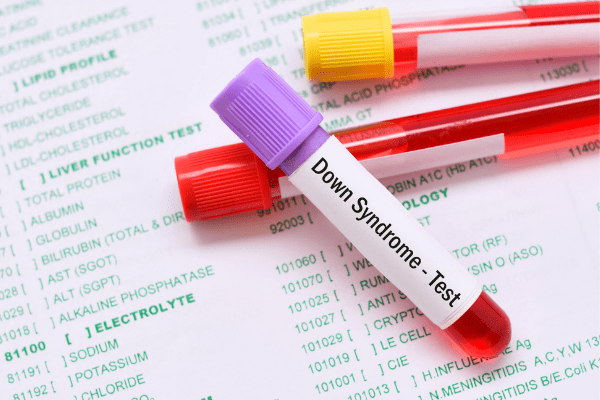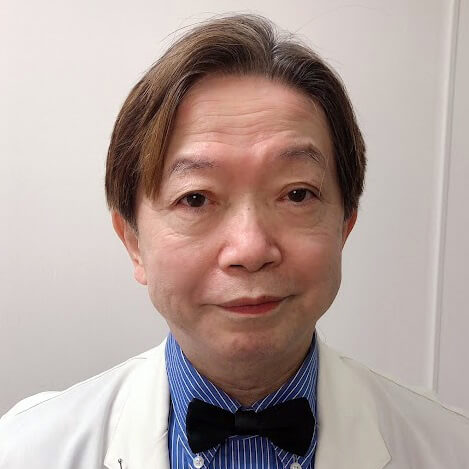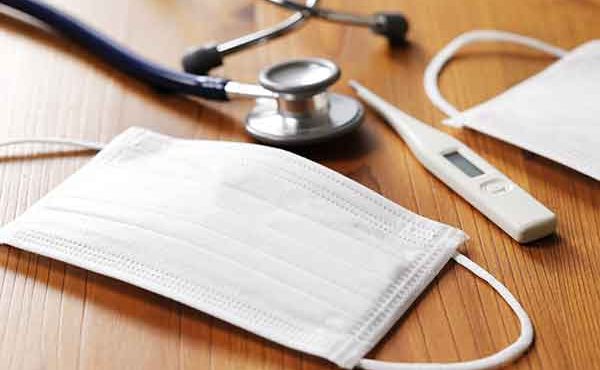- Why do complications of Down syndrome occur?
- People with uncomplicated Down syndrome
- Probability of complications from Down syndrome
-
Complications and treatments that are likely to occur in people with Down syndrome
- Diseases of the circulatory system [ventricular septal defect, atrial septal defect, etc.]
- Diseases of the digestive system [duodenal obstruction, esophageal obstruction, etc.]
- Metabolic and endocrine disorders [diabetes, hyperlipidemia, etc.]
- Ophthalmologic diseases [strabismus, cataracts, etc.]
- Otolaryngological disorders [hearing loss, otitis media exudative, etc.]
- Orthopedic and skeletal disorders [short stature, flat feet, etc.]
- Diseases of the blood system [leukemia, iron deficiency anemia, etc.]
- Diseases of the nervous system [epilepsy, developmental disorders, etc.]
- Diseases of the urinary system [e.g., undescended testis, suburethral cleft]
- Treatment of Complications of Down Syndrome, Neonatal
- Treatment of Complications of Down Syndrome, Children
- Treatment of Complications of Down Syndrome, Adult
- Summary
Why do Down syndrome complications occur?
Down syndrome is a chromosomal abnormality called Down syndrome. It is a disease in which the 21st chromosome has 3 instead of the usual 2, and is said to be the most common chromosomal abnormality.
Mutations are the main cause of Down syndrome , but maternal age is thought to be closely related to the incidence of Down syndrome .
As you get older, your eggs age and your chances of developing chromosomal abnormalities such as Down syndrome increase. In fact, it has been reported that 1 in 1,450 to 1,050 mothers in their 20s, 1 in 940 to 110 in their 30s, and less than 100 in their 40s and older.
Down syndrome is characterized by slow overall growth, common features such as appearance, and is often accompanied by complications, which are thought to be influenced by chromosomal abnormalities.
Thanks to advances in medical care, treatment, and education, he is able to lead a normal school and social life despite having Down syndrome . It is important to consult with specialized doctors, public health nurses, and support organizations regarding growth and lifestyle with Down syndrome , and receive support that is appropriate for the child.
In recent years, the accuracy of NIPT (New Prenatal Diagnosis) tests , which can determine a baby’s condition before birth, has also improved. There is no risk to the fetus, and it can be taken immediately after pregnancy is confirmed by ultrasound, so it is possible to quickly learn about the baby’s condition.
※ What is NIPT (New Prenatal Diagnosis)?
” A test to check for chromosomal abnormalities such as trisomy 21 (Down’s syndrome) , trisomy 18 (Edwards syndrome) , and trisomy 13 (Patau syndrome) in the fetus using blood collected from the mother .”
People without Down syndrome complications
Symptoms of Down syndrome vary from person to person, ranging from babies with complications that require surgery immediately after birth to babies with almost no complications.
On average, children will be able to walk holding hands by the age of two. Delays in psychomotor development are inevitable, but some people excel in the arts and some even graduate from university.
Probability of Down syndrome complications
The most common complication of Down syndrome is heart disease, which is said to occur in 40-50% of cases and has a high probability of occurring.
Among these, the most frequently seen defects include ventricular septal defects, endocardial defects, and patent ductus arteriosus.
Next, there are cases in which abnormalities are seen in the esophagus and intestines, including esophageal atresia, anal atresia, and duodenal atresia. Duodenal atresia has a high probability of occurring as a complication of Down syndrome, occurring in 25-40% of cases.
Complications and treatments that are likely to occur in people with Down syndrome
Cardiovascular diseases (ventricular septal defect, atrial septal defect, etc.)
Ventricular septal defect
A disease in which there is a hole in the ventricular septum of the heart is called “ventricular septal defect.” It is a congenital disease that occurs in approximately 3 per 1,000 people. It is often associated with chromosomal abnormalities such as Down syndrome. If the hole is small, it may close on its own.
How to treat ventricular septal defect
If the hole is small, we will monitor the progress without surgical or oral treatment.
In severe cases, surgery may be necessary to close the hole shortly after birth.
If the symptoms are not severe, we often try to improve heart function with therapeutic drugs and wait until the child is 2 to 4 years old before surgery.
Atrial septal defect
A disease in which there is a hole in the atrial septum of the heart is called “atrial septal defect.” The frequency is said to be approximately 5-6% of congenital heart diseases.
When a fetus is a fetus, there is a hole in the wall that separates the left and right atria through which blood flows. After birth, the hole closes naturally as the lungs begin to function, but if the hole remains after birth, it becomes an “atrial septal defect.”
How to treat atrial septal defect
Small holes may close on their own by the age of two. However, if the diameter exceeds 8 mm, it becomes difficult to close naturally and surgery or catheter treatment is required.
Digestive system diseases (duodenal atresia, esophageal atresia, etc.)
The gastrointestinal tract refers to the area from the mouth to the anus, and the part of the digestive tract may be congenitally closed, which is a common complication in children with Down syndrome.
The rectum, anus, small intestine, and esophagus are common sites for atresia.
Fetal ultrasound has a high diagnostic rate for small intestinal atresia, but it is often difficult to diagnose atresia in the esophagus, rectum, and anus.
Duodenal Atresia
The baby has a congenital atresia of the duodenum, which causes vomiting to occur within 24 hours of birth. The duodenum is the most common intestinal atresia. It is known that the incidence of chromosomal abnormalities such as Down syndrome increases.
Treatment of Duodenal Atresia
After decompressing the gastrointestinal tract and restoring the patient’s physical condition with intravenous fluids and electrolytes, surgery is performed as soon as possible.
Esophageal Atresia
Abnormalities are usually noticed by vomiting of saliva or choking when feeding. In patients with chromosomal abnormalities such as Down syndrome, there are many comorbid malformations other than esophageal atresia, so echocardiography and abdominal echocardiography are performed to identify the most common abnormalities such as skeletal abnormalities, renal abnormalities, cardiac and large blood vessel abnormalities, and bronchial abnormalities. Although we will rule out a high number of complications, not all cases can be diagnosed at birth.
Treatment of Esophageal Atresia
During the newborn period, a tube is placed in the stomach to inject milk. Surgery is often performed after waiting for growth.
Diseases of the metabolic and endocrine systems (diabetes, hyperlipidemia, etc.)
Diabetes
Type 1 diabetes (a disorder of insulin-secreting cells caused by an autoimmune mechanism) is 4-5 times more likely to develop in children with Down syndrome and tends to develop at a younger age.
Type 1 diabetes requires regular insulin injections.
Obesity is said to be common in people with Down syndrome, and this is said to be due to low muscle mass and low basal metabolism, as well as lack of exercise and poor eating habits.
Obesity can also cause type 2 diabetes, so you need to be careful.
Hyperlipidemia
It is said that people with Down syndrome are more likely to develop hyperlipidemia.
It is known that high levels of triglycerides are seen from infancy, but there seems to be no report that vascular diseases are more common in people with Down syndrome. Regular blood tests will be required.
Thyroid Disease
Decreased thyroid function is often seen in children with Down syndrome, and they may be diagnosed with hypothyroidism from birth.
Symptoms of low thyroid hormones include decreased energy, weight gain, hypothermia, and constipation. Oral medication is required.
Ophthalmological diseases (strabismus, cataracts, etc.)
Strabismus
The prevalence of strabismus in children with Down syndrome is approximately 30%, and esotropia is mainly observed. We will monitor the progress and perform surgery if necessary.
Cataract
Congenital cataracts can be either congenital or acquired, and it has been reported that the frequency of congenital cataracts in Down syndrome is about 10 times higher. However, most cases of congenital cataracts do not require surgery.
Otorhinolaryngological diseases (hearing loss, otitis media with effusion, etc.)
Hearing Loss
The majority of hearing loss associated with Down syndrome is said to be conductive hearing loss.
Hearing loss caused by abnormalities in the outer or middle ear, and is characterized by difficulty hearing only loud sounds. It may be caused by otitis media, or it may be caused by congenital causes such as malformation of the auditory ossicles.
The main treatments are surgery and drug therapy, and treatment increases the chance of recovery. Hearing aids may be used if necessary.
Many children with Down syndrome improve, so long-term follow-up is important.
Otitis Media with Effusion
Otitis media is caused by a buildup of fluid in the ear.
It is not accompanied by pain or fever like acute otitis media, so seeking medical attention may be delayed. Down syndrome is often associated with otitis media with effusion.
Treatment options include medication, myringotomy, and tube placement.
Orthopedic and skeletal diseases (short stature, flat feet, etc.)
Short Stature
Children with Down syndrome are often born small, and their growth rate may be slowed down during the neonatal and infant stages due to various reasons such as treatment for complications and infections.
Thyroid hormone or growth hormone may be the cause, in which case treatment to replace the hormone may be performed.
Flat Feet
This refers to a condition where the soles of the feet are flat.
Your feet may get tired easily, or you may stand or walk in a way that puts stress on your ankles and knees.
Children with Down syndrome often have flat feet, which can be corrected by inserting special soles from childhood.
Blood system diseases (leukemia, iron deficiency anemia, etc.)
Leukemia
The incidence of acute leukemia is said to be 10-20 times higher in people with Down syndrome .
For testing and treatment, referral to a specialized medical institution is required.
Iron Deficiency Anemia
Most anemia in childhood is iron deficiency anemia. It will be checked with a blood test, and if there is a problem, nutritional improvement or oral medication will be required.
Nervous system diseases (epilepsy, developmental disorders, etc.)
Epilepsy
One type of epilepsy that is more likely to occur in children with Down syndrome is “head epilepsy.” Also called “West syndrome.”
It is an instantaneous contraction of muscles throughout the body that occurs repeatedly at intervals of several seconds, and it often develops before the age of one year and affects mental development.
Your child will need to undergo an electroencephalogram, blood tests, and brain imaging at a pediatrician, and be treated with antiepileptic drugs.
Developmental Disorder
It is said that there is an 8-18% chance of developing autism as a complication of Down syndrome.
The reason why Down syndrome is more likely to develop autism is still unknown.
However, since autism develops in people with congenital brain dysfunction, it is thought that autism may be caused by brain development failure due to Down syndrome .
Urinary system diseases (undescended testis, hypospadias, etc.)
Hypospadias
Hypospadias is a congenital urethral malformation in which the urine exits from the base of the penis rather than the tip, and the penis often points downward.
When urinating, urine may splatter and you may not be able to stand up to urinate.
Treatment is surgery, which is usually performed between the ages of 1 and 2 years.
Undescended Testis
Cryptorchidism is a condition in which the testicle is not in the scrotum and is the most common congenital abnormality in boys.
It is more common in prematurely born children and children with Down syndrome .
It is possible for the child to naturally descend by around 2 years of age, but if there is no natural decline, it is said that it is desirable to undergo surgery at around 2-3 years of age.

Treatment of complications of Down syndrome/Newborns
The types and degrees of complications associated with Down syndrome vary.
Among these, conditions such as duodenal atresia and anal atresia require surgery immediately after birth, and congenital heart disease also requires intensive treatment.
All surgeries and treatments are performed at highly specialized medical institutions, such as pediatric surgery and cardiovascular surgery specializing in children.
Treatment of complications of Down syndrome/Children
Some children require medical care to deal with a variety of complications, such as heart or digestive system disease, low muscle tone, or intellectual disability.
Thanks to advances in surgery and treatment, many diseases can now be cured in early childhood.
Hospital stays for leukemia and epilepsy may be prolonged.
Children with Down syndrome are more susceptible to infections and tend to take longer to recover from infections, but these are common types of infections.
Treatment of complications of Down syndrome/adults
There are many hospitals that specialize in treating children with Down syndrome , and follow-up programs are well established.
However, when children with Down syndrome reach adulthood, they are beyond the age range for pediatrics and children’s hospitals, and often lose contact with hospitals without being transferred to internal medicine.
In adulthood, complications unique to adults with Down syndrome that do not occur in childhood, such as obesity, hyperuricemia, hyperlipidemia, degenerative phenomena, adjustment disorders, and Alzheimer’s disease , as well as eye diseases, otorhinolaryngological diseases, and dental and oral cavity diseases. Medical care for surgical and other illnesses continues to be necessary.
It is recommended that you have a doctor who understands the nature of Down syndrome and receive specialized treatment.
Summary
People with Down syndrome had a short lifespan and were thought to be unable to live into old age. However, due to advances in medicine and treatment, lifespans are now increasing.
Although people with Down syndrome have a higher chance of complications and developmental delays, with the help of those around them, it is possible for children with Down syndrome to go on to school, work, and lead a life that involves them in the community.
Although there is currently no fundamental treatment for Down syndrome , treatments for complications have been established, and treatments to promote development are being updated daily. It can be said that it is important to obtain correct knowledge about Down syndrome .
[References]
- J-STAGE Koichiro Oyake, Yuzuru Ou, Nozomi Takahashi, Shuta Tomisato, Rinko Morimoto – Examination of hearing loss in infants with Down syndrome
- Seiji Mizuno, Department of Pediatric Internal Medicine, Aichi Prefectural Medical and Rehabilitation Center Central Hospital – Health management for adults with Down syndrome
- MSD manual
- Japanese Society of Pediatric Endocrinology – Short stature | Japanese Society of Pediatric Endocrinology
Article Editorial Supervisor

Dr. Masahiko Ito
Former Professor, University of Health and Welfare, Former Dean, Kashiwa Rehabilitation School, University of Medical Innovation, Member, Japanese Society for Gene Therapy and Japanese Society for Gene Research, etc.
Brief History
1974 – Entered the National Defense Medical College
1979 – Externship at the Department of Pediatrics, Faculty of Medicine, University of Sydney, Australia (Royal Alexandria Children’s Hospital)
1980 – Graduated from National Defense Medical College (1st class). Joined the Department of Pediatrics, National Defense Medical College
Worked at the Department of Pediatrics, National Defense Medical College Hospital, Self Defense Forces Central Hospital, Department of Neonatology, Hokkaido General Health Center for Children, and Mishuku Hospital of the National Public Service Mutual Aid Union
1989 – Research Fellow, Harvard Medical School, USA; Clinical Fellow, Tufts University School of Medicine, USA
1993 – Lecturer of Pediatrics, Saitama Medical College Junior College of Saitama Medical School
1994 – Lecturer of Pediatrics, Saitama Medical College
1997 – Associate Professor of Pediatrics, International University of Health and Welfare, Japan, working in the Department of Pediatrics, Sanno Hospital, Japan
2006 – Special Appointment Professor of Pediatrics, International University of Health and Welfare, International University of Health and Welfare (Pediatrics)
2008 – Honorary Director of Ihatove Hospital (Iwate Rosai Hospital)
2009 – Chairman, Hasuda Yotsuba Hospital, Kokoro no Kizuna Medical Corporation
2010 – Chairman, Ginza Cosmetic Surgery Clinic, Ginbikai Medical Corporation
2011 – Director of Shinkawa Hospital, Tsuruyokai Medical Corporation
2011 – Director of Chiba-Kashiwa Rehabilitation School of Medical Sosei University Educational Corporation
2014 – Director, Niigata Chuo Dialysis Clinic, Aoi Kai Medical Corporation
2016 – Deputy Director, Niigata Seiro Hospital, Aoi Kai Medical Corporation
2017 – Director, Higashi Katsushika Hospital, Fukujukai Medical Corporation
2018 – Director of International Department, AOI International Hospital, Aoi Kai Medical Corporation
Certifications
Doctor of Medicine
Registered as a care support specialist (Care Manager)
Board Certification in Allergology, Japanese Society of Allergology
Certified Industrial Physician by the Japan Medical Association
Board Certification in Pediatrics, Japan Pediatric Society
Passed the Japanese Society of Laser Medicine Medical Specialist Examination
Councilor of the Japanese Society of Pediatric Allergy
Councilor, Japanese Society of Pediatric Psychosomatic Medicine
Councilor, Japan-U.S. Medical Exchange Foundation
Councilor, Japan Internet Medical Association
Board member of the Japan Society for Computer Science
Chairman of the Board of Directors, Nightingale Spirit League
Chairman of the Board of Directors, NPO Defense Health Career Net
Advisor to the Medical Department of Kurokane Prison, Ministry of Justice, and other positions or activities
 中文
中文






















